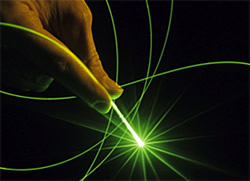Technology Advances in the Last Decade
Technology advances in the last decade transformed the automotive, commercial, and consumer device landscape.
 Enabled by advances in silicon IC technology, markets and applications converged around WiFi, LTE, Bluetooth, flash memory, multicore processors, and standardized high-speed I/O interfaces. The transition from the Internet of connected people to the Internet of connected things opened up entirely new classes of equipment and has driven demand for access to ever-greater bandwidth. The rise of the smartphone is a good example of the evolution of a communication device to a model that provides entertainment, information, and imaging and enables control of a growing universe of Internet-connected devices. Landline communications are becoming increasingly obsolete. The migration toward a host of portable and wearable devices is driving demand for low-cost subminiature connectors that can survive harsh environments. The introduction of tablet and pad computing devices has begun to threaten desktop and even notebook sales, while the market for digital cameras and standalone GPS devices are plummeting. Advances in battery chemistry have unhitched computing devices from the wall outlet and spurred introduction of millions of apps that offer functions that range from streaming video to home security.
Enabled by advances in silicon IC technology, markets and applications converged around WiFi, LTE, Bluetooth, flash memory, multicore processors, and standardized high-speed I/O interfaces. The transition from the Internet of connected people to the Internet of connected things opened up entirely new classes of equipment and has driven demand for access to ever-greater bandwidth. The rise of the smartphone is a good example of the evolution of a communication device to a model that provides entertainment, information, and imaging and enables control of a growing universe of Internet-connected devices. Landline communications are becoming increasingly obsolete. The migration toward a host of portable and wearable devices is driving demand for low-cost subminiature connectors that can survive harsh environments. The introduction of tablet and pad computing devices has begun to threaten desktop and even notebook sales, while the market for digital cameras and standalone GPS devices are plummeting. Advances in battery chemistry have unhitched computing devices from the wall outlet and spurred introduction of millions of apps that offer functions that range from streaming video to home security.
Data Rates, Backplanes, and I/O Connectors
Construction of huge server farms and data centers has stimulated the development of high-performance backplane and I/O connectors that evolved from sub-megabit single-ended signaling to 10+ gigabit low-voltage differential signaling. Standard 2mm backplane connectors have evolved to those that feature tightly controlled impedance, as well as reduced crosstalk, skew reflections, and attenuation. Huge advances in the science of signal integrity, circuit simulation, and active signal conditioning devices have enabled copper interfaces to continually expand beyond their anticipated bandwidth limitations. The industry is moving toward 25Gb/s signaling, which will provide the foundation for 100Gb Ethernet and beyond. Achieving these speeds in copper interconnects is spurring leading backplane connector suppliers to explore the advantages of cable and direct orthogonal backplane architecture. Advanced I/O connectors continue to adapt to the increasing throughput of new multi-core processors. Originally operating at 12Mb/s, USB 3.0 is now rated to 5Gb/s. The Intel Thunderbolt connector runs at 10Gb/s. Although tremendous effort has been invested in reducing the power consumption per instruction cycle, energy demand at the system level continues to rise. Designers are looking for power connectors with higher current ratings and contact density while offering compatibility with thermal management strategies.
 After many false starts, fiber optic links are beginning to become more practical in shorter run applications while providing nearly unlimited bandwidth headroom. Active optical cables are being widely adopted to extend the range of traditional interfaces, while new PCB-mounted optical engines enable optical links between and even within the box.
After many false starts, fiber optic links are beginning to become more practical in shorter run applications while providing nearly unlimited bandwidth headroom. Active optical cables are being widely adopted to extend the range of traditional interfaces, while new PCB-mounted optical engines enable optical links between and even within the box.
Solid-State Technology and Energy Efficiency
Traditional rotating disk storage continues to make incredible strides in data density and transfer rates, packing terabits of data in the same envelope. Implementation of solid-state memory has enabled the bulk of handheld multimedia appliances. The cost of solid-state memory continues to drop, and increased reliability has made it a practical alternative for a greater array of applications.
Global demand for greater energy efficiency and preservation of the environment has driven the evolution of the incandescent light bulb to compact florescent and solid-state LED alternatives. A combination of government mandates, improved performance, and decreasing costs are creating new component markets in the solid state lighting industry, including power supplies and Internet-connected lamps. Additional governmental restrictions eliminated lead and other toxic materials from traditional electronic manufacturing processes, while other mandates impact the source of raw materials and recyclability of end-of-life electronic devices. The search for alternative energy sources, including wind and solar, have opened market opportunities for new application-specific connectors.
Wireless and All-New Classes of Products
Maturation of short-range wireless technologies such as WiFi, Bluetooth, and ZigBee enable wireless phone and music connections and are finally making home automation a practical reality. New human/computer interfaces such as touch, voice, and gesture now supplement traditional keyboards. Entirely new classes of products, including 3D printers, UAVs, and industrial and medical robotic machines, are creating new applications for connectors, while flat-screen displays have almost entirely banished the CRT.
The Automotive Market
The automotive market is undergoing a massive transition from mechanical to electronic function control that extends from shiftless electronic transmissions to precise control of emissions. Auto manufacturers are integrating an expanding array of electronic functions that range from heads-up instrumentation to accident avoidance.
 GM recently announced the 2015 introduction of several models that will feature optional OnStar 4G LTE connection, enabling high-speed Internet access to all portable devices inside the auto. Google recently launched the Android-based Open Automotive Alliance to assist developers who want to add a car mode to their applications. Advances in sensor and GPS technology are making autonomous vehicles a real possibility.
GM recently announced the 2015 introduction of several models that will feature optional OnStar 4G LTE connection, enabling high-speed Internet access to all portable devices inside the auto. Google recently launched the Android-based Open Automotive Alliance to assist developers who want to add a car mode to their applications. Advances in sensor and GPS technology are making autonomous vehicles a real possibility.
Cloud Technology
Cloud computing is changing the entire process by which software is distributed and data is stored. Expansion of the cloud will impact the architecture of individual computing devices while opening up new hardware opportunities in mass storage and data transmission.
A huge migration of electronic manufacturing to Asia has occurred over the past 10 years, in some cases accompanied by some product management and even engineering personnel. This has caused a massive restructuring of the global supply chain with major impact on both OEM and EMS organizations, driven by access to low-cost manufacturing as well as the need to locally support the largest and fastest-growing consumer market.
Impact on Connector Industry and Technology
The connector industry has been remarkably resilient in the face of these changes:
Industry Consolidation
Larger companies have branched out to acquire market segment and niche market suppliers, and to beef up sales and market penetration. A key player in these moves has been Amphenol, as well as TE Connectivity, Molex, FCI, and others. Beyond these deals was the acquisition by Tyco of AMP and its eventual spinoff as TE Connectivity, and the most recent change of ownership: Molex’s acquisition by Koch Industries.
Globalization
All major and many smaller suppliers set up assembly plants in China. This was particularly evident in the burgeoning cell phone/smartphone market as well as those for notebook and desktop PCs, tablets, and other consumer electronics. The US and Europe went from 55%+ of world connector production to less than 30%.
Relentless Cost Pressures
Squeezed between rising material costs (such as gold, silver, and copper) and offshore pricing, connector manufacturers have done a good job of controlling costs, albeit with a constant battle to maintain margins. In some cases, this has led companies to abandon certain product efforts in the 3C area.
Supply Chain Management
Part and parcel to the global economy, EMS suppliers are manufacturing in China.
Paradigm Shift in Customer Base
The manufacturing environment changed from an OEM world with “Super Salesmen” to multi-tiered customer interactions among OEM design groups, global account management teams, and OEMs’ semi-independent EMS suppliers, which is a totally new challenge in the marketing arena.
Organizational Productivity
Putting a nice face on downsizing headquarters’ operations and manufacturing plants in the Americas, Europe, and Japan, connector organizations today are much leaner than 10 years ago. There are fewer layers of management, fewer office workers per function, and many fewer domestic manufacturing facilities. The positive outlook is lower overhead and more efficient operations; the negative outlook is that it’s almost impossible to communicate unless you are a customer placing an order or doing a spec.
Industry Standardization
This has continued unabated and probably accelerated over the past decade, including the emergence of users group standards activity such as the USB Implementers Forum and HDMI Forum. At the same time, it seems the amount of company investment directed toward standards activity has decreased — or has been delegated to product groups rather than a corporate standards group.
This article was written by Bob Hult and John MacWilliams of Bishop & Associates Inc.
- State of the Industry: 2022-2023 Connector Sales - April 16, 2024
- Amphenol is On a Roll - April 2, 2024
- Nicomatic Proves That Two Heads are Better Than One - March 26, 2024







